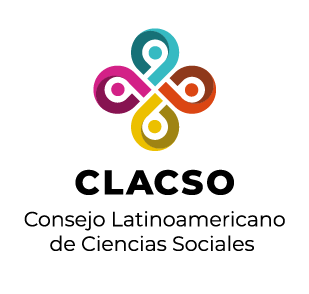Red de Bibliotecas Virtuales de Ciencias Sociales en
América Latina y el Caribe

Por favor, use este identificador para citar o enlazar este ítem:
https://biblioteca-repositorio.clacso.edu.ar/handle/CLACSO/255059Registro completo de metadatos
| Campo DC | Valor | Lengua/Idioma |
|---|---|---|
| dc.creator | Moreno Díaz, Mary Luz | - |
| dc.date | 2022-10-05T17:11:10Z | - |
| dc.date | 2022-10-05T17:11:10Z | - |
| dc.date | 2022-10 | - |
| dc.date.accessioned | 2025-09-17T01:55:53Z | - |
| dc.date.available | 2025-09-17T01:55:53Z | - |
| dc.identifier | http://hdl.handle.net/11056/24046 | - |
| dc.identifier | https://publica2.una.ac.cr/periodicoCampus/octubre-2022/pdf/campuscriterios.pdf | - |
| dc.identifier.uri | https://biblioteca-repositorio.clacso.edu.ar/handle/CLACSO/255059 | - |
| dc.description | Costa Rica se ha distinguido por contar con políticas para la gestión de recursos naturales y servicios ambientales, orientadas a la estructuración de diferentes categorías de manejo; nueve en la actualidad, que permiten diferentes niveles de conservación y que generan beneficios al país, en general, y a las comunidades aledañas, en particular. Las zonas de amortiguamiento (ZAM) no se encuentran dentro de esta categorización, pero se reconoce su importancia en los planes de manejo de las Áreas Silvestres Protegidas (ASP). | - |
| dc.description | Costa Rica has distinguished itself by having policies for the management of natural resources and environmental services, aimed at structuring different management categories; nine currently, which allow different levels of conservation and generate benefits for the country, in general, and for the surrounding communities, in particular. The buffer zones (ZAM) are not within this categorization, but their importance is recognized in the management plans of the Wild Protected Areas (ASP). | - |
| dc.description | Universidad Nacional, Costa Rica | - |
| dc.description | Centro Internacional de Política Económica para el Desarrollo Sostenible | - |
| dc.format | application/pdf | - |
| dc.language | spa | - |
| dc.publisher | Universidad Nacional, Costa Rica | - |
| dc.rights | Acceso abierto | - |
| dc.rights | Attribution-NonCommercial-NoDerivatives 4.0 Internacional | - |
| dc.rights | http://creativecommons.org/licenses/by-nc-nd/4.0/ | - |
| dc.source | Periódico Campus Digital, octubre 2022 | - |
| dc.subject | COSTA RICA | - |
| dc.subject | AMORTIZACIÓN | - |
| dc.subject | ÁREAS SILVESTRES | - |
| dc.subject | SERVICIOS AMBIENTALES | - |
| dc.subject | RECURSOS NATURALES | - |
| dc.subject | WILDERNESS AREAS | - |
| dc.subject | ENVIRONMENTAL SERVICES | - |
| dc.subject | NATURAL RESOURCES | - |
| dc.subject | AMORTIZATION | - |
| dc.title | ¿Por qué son importantes las zonas de amortiguamiento? | - |
| dc.type | http://purl.org/coar/resource_type/c_998f | - |
| Aparece en las colecciones: | Facultad de Ciencias Sociales - UNA - Cosecha | |
Ficheros en este ítem:
No hay ficheros asociados a este ítem.
Los ítems de DSpace están protegidos por copyright, con todos los derechos reservados, a menos que se indique lo contrario.